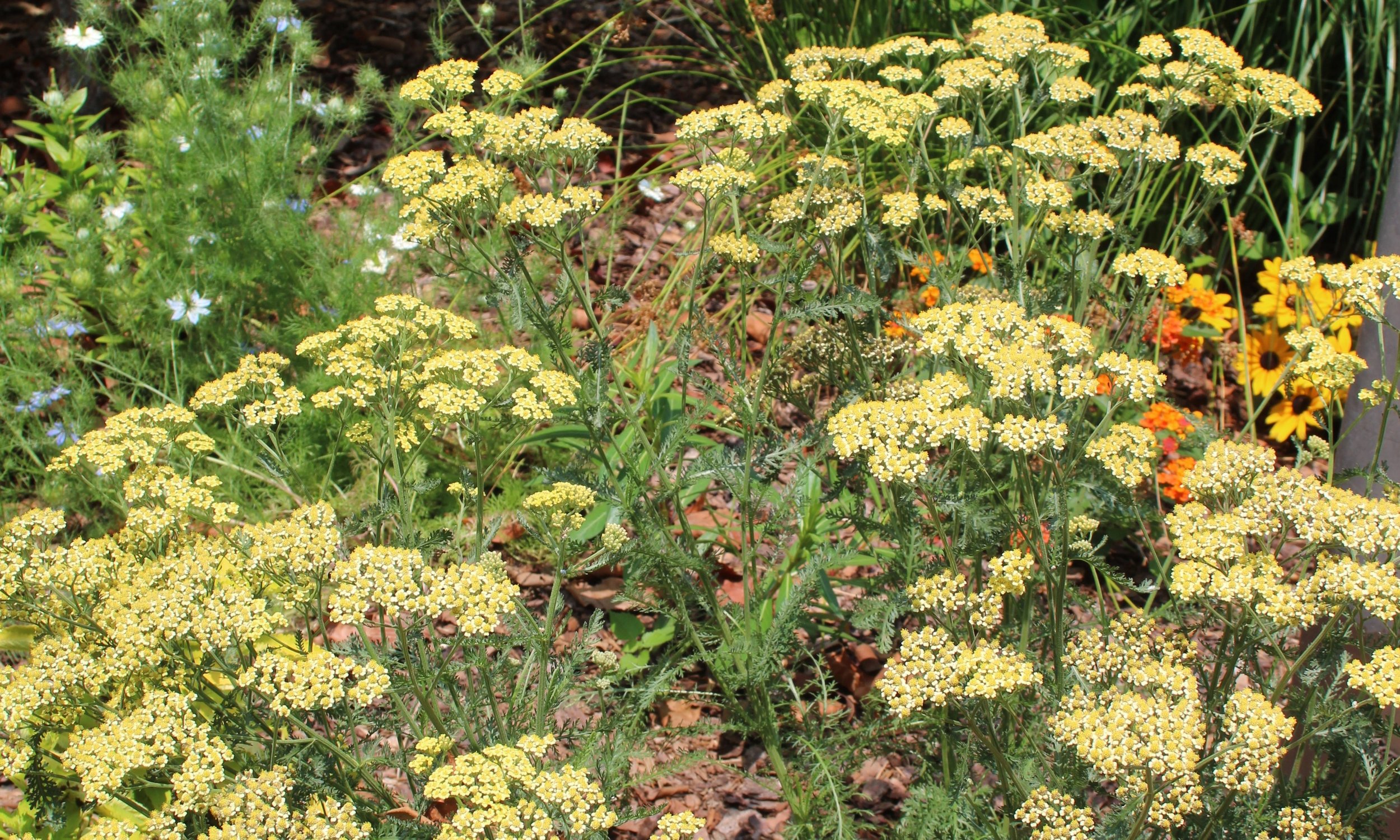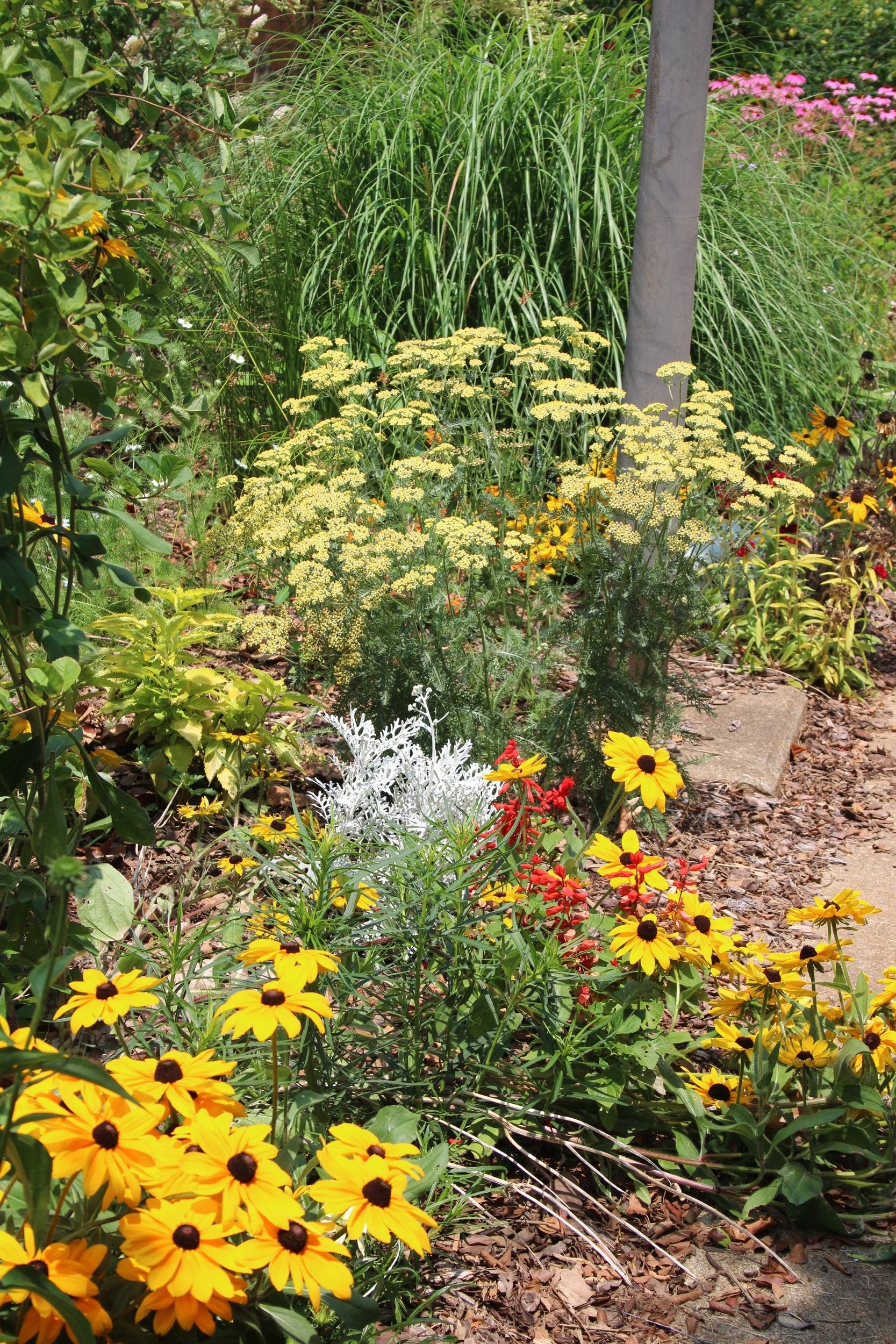The US is blanketed by cold weather this week. My Camellia japonica was covered with flowers. Now they are blackened and sad. I visited my photo files to find something to make me remember the warmth of summer, and ran across pictures of Yarrow.
Yellow Yarrow is a heat tolerant plant beloved by pollinators.
Achillea millefolium (ack-uh-LEE-ah mill-ee-FOH-lee-um), commonly known as Yarrow, is an easily grown, heat-tolerant perennial for full sun. It has finely divided grayish foliage. Almost leafless stems terminate in flat-topped clusters of many (20 to 25, on average) small blooms. The straight species can become weedy or invasive, but the hybrids sold in garden centers are mostly sterile. Flowers come in pastels, yellow, white, red, purple, and orange shades. Yellow is the most common color and it ages well. ‘Moonshine’ has lemon-yellow flowers.
Yarrow has a long bloom period, from summer to frost. Plants can be deadheaded to encourage more flowering. If they become messy or foliage begins to brown or look tattered, an aggressive cutback will spur new growth. Yarrow likes a neutral pH and well-drained soil. While easy to grow in loam or sand, clay soils should be amended with organic matter to increase drainage and avoid excessive moisture that may lead to root rot.
Yarrow is a great plant for pollinator gardens, xeric gardens, and evening gardens, where the gray foliage remains visible at dusk. It mixes and mingles well with other plants, and can be sprinkled among cottage garden beds as a see-through plant. Deer avoid them.
This photo was taken in mid-June of last year, in the botanical gardens of Spartanburg Community College. The fine flowers of pale yellow Yarrow pair nicely with the bold flowers of Rudbeckia and the red accent of Salvia. A gray Artemisia provides contrast, like a condiment adding spice to a bland meal.


